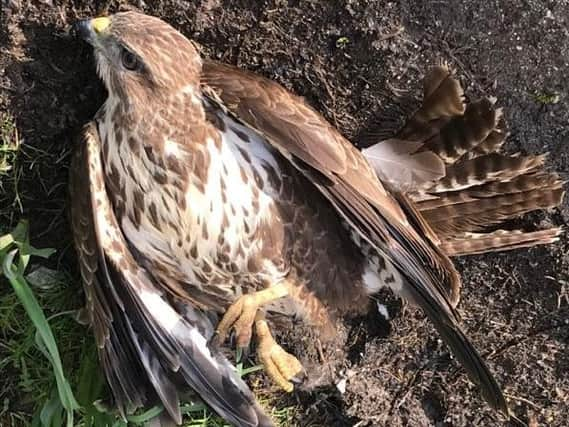Warning to dog walkers after buzzard illegally poisoned with banned pesticides


The bird's body was sent for analysis after it was seen falling out of a tree near Pateley Bridge, Nidderdale, in March, by a member of the public.
It was taken to a vet but died shortly after.
A report by the Wildlife Incident Investigation Scheme, which is run by Natural England, revealed three pesticides in its gizzard and crop and a fourth in its kidney.
Advertisement
Hide AdAdvertisement
Hide AdIt concluded that poisoning was likely to be the cause of the bird’s death, given it was fit and healthy and had eaten a large meal.
The pesticides included Carbofuran, which is known to be particularly toxic to birds - a single grain would kill a large bird of prey such as a golden eagle.
Earlier this month 23 buzzards were illegally poisoned in a single incident in County Cork.
Police say people walking their pets should not allow dogs to eat any dead animals they come across, as the poison can be laid on carcasses.
Advertisement
Hide AdAdvertisement
Hide AdThe other pesticides included banned Isofenphos and the central nervous system depressant Chloralose.
The fourth was Bendiocarb, which is licenced as an ingredient in a number of insect control products, but should not be released anywhere wildlife can come into contact with it.
North Yorkshire, home to a large number of driven grouse moors, has for the past five years been at the top of the RSPB’s list of raptor persecution blackspots.
The latest report in August 2019 again showed the area as having the highest number of confirmed raptor deaths in the UK.
Advertisement
Hide AdAdvertisement
Hide AdA spokesperson for North Yorkshire Police said: "North Yorkshire Police is investigating this incident and has so far not found any evidence to suggest how the pesticides reached the buzzard in this case or previous cases.
"Often, the poison may be laid on bait such as a rabbit carcass or other so police urge dog owners to be careful and not allow their dogs to eat any dead animals they might come across on a walk or during exercise."
The force said anyone finding an object they believe may be contaminated should not touch it, but take lots of photos and try and obtain a detailed grid reference.
It should be reported immediately to police.